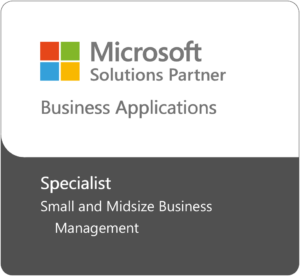Ever wonder why your print operation feels like it’s running uphill even when orders are flowing? You’re juggling customer quotes in one system, tracking inventory in another, managing production schedules on spreadsheets, and somehow trying to make sense of profitability across it all. Sound familiar?
Here’s the uncomfortable truth: those disconnected systems aren’t just inconvenient—they’re silently draining your bottom line to the tune of tens of thousands of dollars annually. And most print shop owners have no idea how much it’s actually costing them. Top industry experts have stated that nearly 40% of North American commercial printers do not have an MIS (Management Information System) in place and often lack accurate job cost estimates.
Where your money really goes
Let’s talk real numbers. When Boyer worked with a mid-sized commercial printer, the results were jaw-dropping. Before implementing an integrated system, they were spending 17 hours and 37 minutes on an average order. After implementation, they had reduced those labor needs by more than 50%, down to just 7 hours and 36 minutes!
Think about that for a moment. If you’re processing 200 orders monthly and paying an average of $25 per hour for that labor, those extra 10 hours per order translate to $50,000 in unnecessary labor costs annually. That’s before we even talk about the other hidden expenses.
The real cost breakdown looks like this:
Data re-entry and errors: When your estimating system doesn’t talk to your production planning, someone has to manually transfer every job specification, measurement, and requirement. We’ve seen print shops where a single order gets re-entered into 4-5 different systems. Each re-entry introduces potential errors that can turn profitable jobs into costly mistakes.
Lost time in system switching: Your estimator starts in the quoting system, switches to inventory management to check stock, opens email to communicate with the customer, then updates production schedules in yet another system. Those 2-3 minutes per system switch add up quickly across hundreds of orders.
Delayed billing and cash flow impact: When job completion data lives in one system and invoicing happens in another, there’s inevitably a lag between job completion and customer billing. In the print industry, where margins are tight, even a few days delay in billing can significantly impact cash flow.
Why print shops need connected systems
Modern print operations require seamless data flow from the initial quote through final delivery. When systems work in isolation, you’re essentially running multiple businesses that happen to share the same building.
Microsoft Dynamics 365 Finance & Supply Chain Management (FSCM) transforms this fragmented approach into a unified operation. Instead of managing multiple disconnected systems, everything flows through a single, integrated platform that speaks your industry’s language.
Real-time visibility across operations: Imagine knowing exactly where every job stands in your workflow without making phone calls or walking the floor. F&SCM provides instant visibility into production schedules, material availability, and delivery timelines—all from a single dashboard.
Automated workflow management: When a customer approves a quote, the system automatically generates production orders, allocates materials, schedules press time, and creates shipping documents. There are no manual handoffs, no forgotten steps, no delays.
Accurate job costing and profitability analysis: You can finally understand which jobs actually make money. The system tracks every cost component—materials, labor, overhead, finishing—providing real-time profitability analysis that helps you make smarter pricing decisions.
Compounding cost of complexity
Disconnected systems don’t just cost money—they create cascading inefficiencies that touch every aspect of your operation such as:
Customer service degradation: When customer service representatives can’t quickly access job status, material requirements, or delivery schedules, every customer inquiry becomes a research project. This delays responses and erodes customer confidence.
Inventory mismanagement: Without integrated inventory tracking, you might order materials you already have or run out of essential supplies mid-production. Both scenarios cost money and disrupt operations.
Quality control challenges: When production specifications live in one system and quality checkpoints are managed in another, important details get lost in translation. The result? You wind up with peprints, customer complaints, and eroded margins.
Beyond efficiency: competitive advantage through integration
Companies leveraging integrated business platforms are seeing measurable improvements in customer acquisition, operational efficiency, and market responsiveness. In the print industry, where competition is fierce and margins are thin, these improvements translate directly to competitive advantage by way of:
Faster quote turnaround: Integrated systems enable rapid quote generation by automatically pulling current material costs, press availability, and shipping schedules. While competitors take days to respond, you can provide accurate quotes in hours.
Predictive maintenance and scheduling: AI-powered features in FSCM can predict when equipment maintenance is needed and automatically schedule downtime during low-demand periods. This prevents costly emergency repairs and keeps production flowing smoothly.
Advanced analytics for strategic decisions: Integrated data provides insights that disconnected systems simply can’t deliver. Which customers are most profitable? Which products have the highest margins? Where are bottlenecks developing? These insights drive better strategic decisions.
Why Boyer understands print operations
At Boyer, we’ve guided hundreds of organizations through digital transformations, including numerous print and manufacturing operations. As a Microsoft Solutions Partner with more than 30 years of experience, we understand that successful implementations require more than just technical expertise—they require deep industry knowledge.
Industry-specific configuration: Print operations have unique requirements around job costing, material planning, and production scheduling. Our team configures FSCM specifically for print industry workflows, ensuring the system supports your actual business processes rather than forcing you to adapt to generic functionality.
Change management expertise: Our proven track record includes a 97% client retention rate, reflecting our commitment to ensuring technology investments deliver measurable business value. We handle the complexity so you can focus on operational improvements.
Ongoing optimization: Technology implementation is just the beginning. We work with clients to continuously optimize their systems as business needs evolve, ensuring your platform remains a strategic asset rather than becoming technical debt.
Realize ROI that matters
The return on investment for integrated print management systems typically becomes apparent within the first year. Here’s how the numbers typically work:
Labor cost reduction: Based on the 50% labor reduction we documented, a print shop processing 200 orders monthly can save $50,000 annually in labor costs alone.
Error reduction: Integrated systems eliminate most data re-entry errors, reducing reprints and customer service costs. Even a 25% reduction in errors can save thousands annually.
Faster billing cycles: Automated billing processes reduce the time between job completion and invoice generation, improving cash flow and reducing collection cycles.
Better pricing decisions: Real-time job costing enables more accurate pricing, helping capture additional margin on complex jobs while remaining competitive on standard work.
Think strategically and gain the edge
The print industry is experiencing unprecedented consolidation and competitive pressure. Shops that operate efficiently and respond quickly to customer needs are thriving, while those stuck with outdated processes struggle to compete.
The companies that will dominate their markets in the coming years are those that recognize business platforms as strategic weapons rather than operational necessities. They’re investing in platforms that don’t just improve current operations but enable entirely new ways of creating and capturing value.
For print operations, this means moving beyond disconnected systems toward integrated platforms that provide real-time visibility, automated workflows, and predictive analytics. The question isn’t whether your operation needs these capabilities—it’s whether you’ll develop them before your competitors do.
Ready to calculate your real cost of disconnected systems?
Don’t let outdated processes continue draining your profitability. The combination of Microsoft Dynamics 365 FSCM’s print industry capabilities and Boyer’s implementation expertise offers a path forward that turns operational complexity into competitive advantage.
Ready to transform your print operation from a collection of disconnected systems into an integrated, efficient powerhouse? Contact Boyer & Associates today to discover how FSCM can revolutionize your workflow and deliver the kind of ROI that makes CFOs smile.









